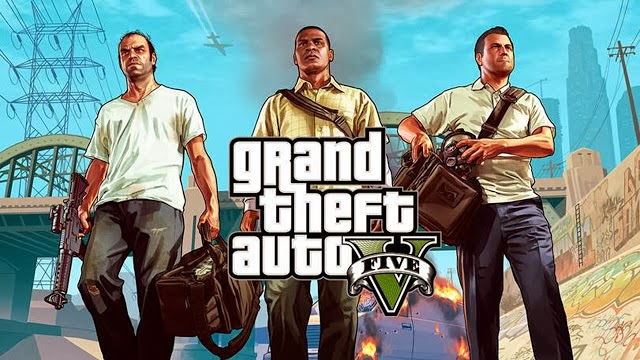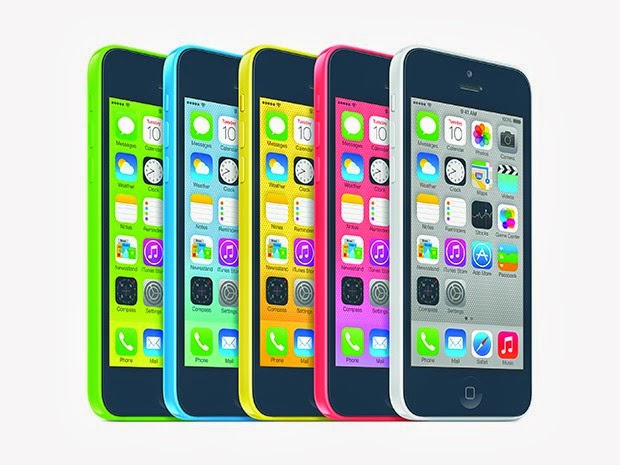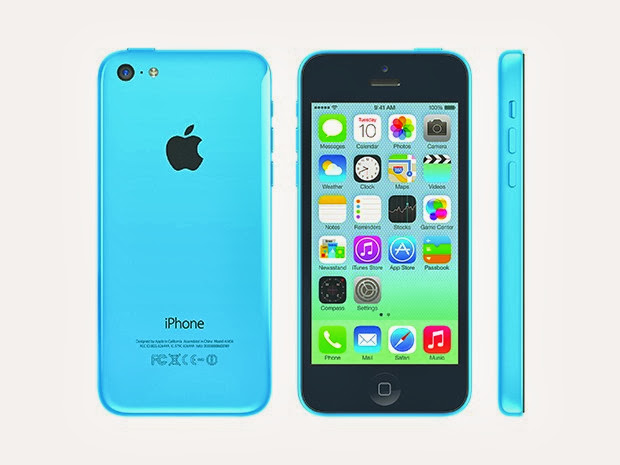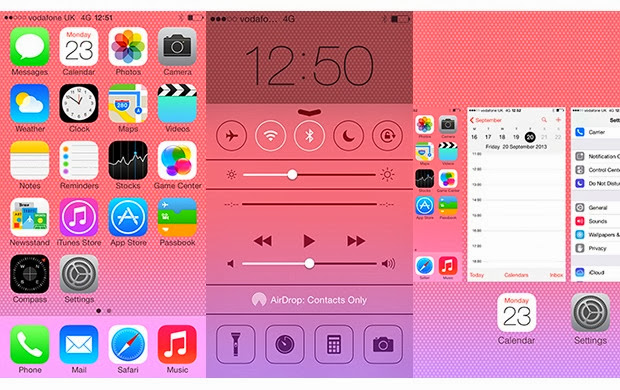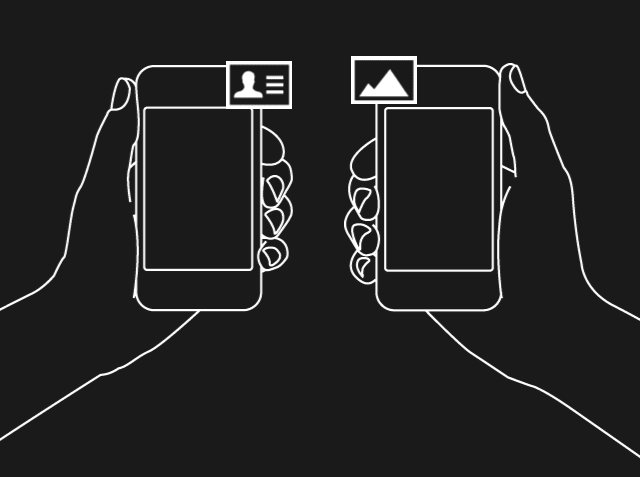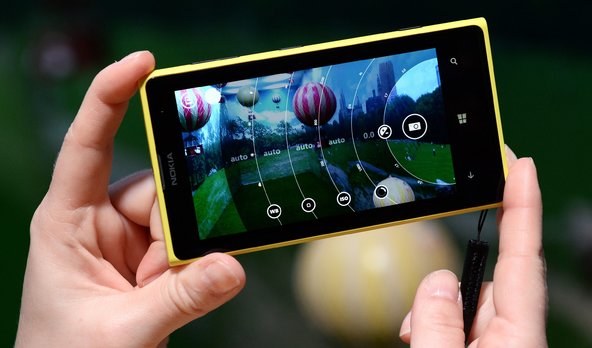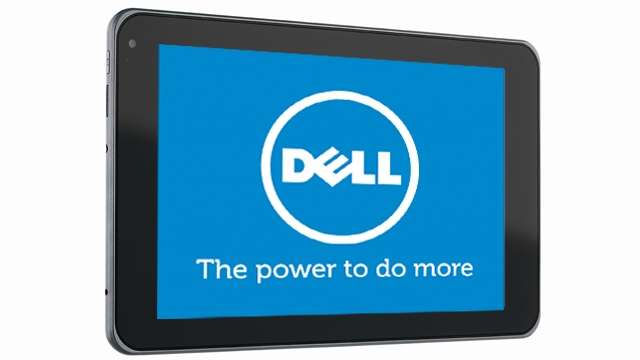iPhones have always been aspirational, high-end products,
for which people have been prepared to pay a hefty price in order to join the
(not particularly exclusive) club. With Apple's 2013 handset launches that
approach has changed slightly: the flagship iPhone 5s occupies the
traditional premium-product slot, while the iPhone 5c, reviewed here, and
comes in for those with less money to spare.
However, pricing is still high compared to the iPhone 5c's
many Android-based rivals, with the entry-level 16GB model costing £469 (inc.
VAT; £390.83 ex. VAT) SIM-free, rising to £549 (inc. VAT; £457.50 ex. VAT) for
the 32GB model. Two-year contract prices from Vodafone, supplier of our
review sample, start at £42 a month for a 3G plan with a free handset, or £47 a
month for a '4G-ready' plan.
The flagship iPhone 5s costs £549 (inc. VAT) for the 16GB
model, £629 for 32GB and £709 for 64GB, while Google's Nexus 4 —
perhaps the best-value Android smartphone of the past 12 months — costs £159 (inc.
VAT) for the 8GB model and £199 with 16GB of internal storage.
The iPhone 5c may be a budget buy in
Apple's terms, but it
isn't really one in the broadest sense.
Design
The most obvious innovation in the iPhone 5c is the chassis
build, which uses a seamless plastic shell over a steel-reinforced frame. The
general design is immediately recognisable as an iPhone, with the telltale home
button beneath the screen, rounded
corners and Apple logo on the back.
But
Apple has decided, for the first time, to produce a handset with a range of
pastel-coloured casings in addition to white: you can opt for green, blue,
yellow or pink alternatives. There's no black, though. We were sent the pink
version, which is unlikely to find its way into many businesses. It's worth
noting that the only other handset maker that dares to be as bold with its
handset chassis colours is Nokia.
The
plastic that's used for the outer shell has a shiny but grip-friendly finish
that's not completely scratch resistant. As with previous iPhones, the battery
is sealed in behind a non-removable backplate.
The
silent-mode switch and volume buttons are on the left edge, while the power
switch is on the top. The headset jack is on the bottom edge, alongside the
microphone, Lightning connector and speaker. There's a caddy for a nano-SIM on
the right edge of the chassis.
The 132g iPhone 5c feels solid and substantial in the hand, yet is quite comfortable to hold — even for people with small hands. It's quite thin at 8.97mm and has a moderate-sized footprint at 59.2mm by 124.4mm.
The Retina display measures just 4 inches across the diagonal, but its 1,136-by-640-pixel resolution makes for a sharp and clear 326-pixel-per-inch (ppi) image. The backlit IPS LCD screen is vibrant and content seems to jump out at you. The iOS 7 feature that sees application icons jiggle about slightly as the phone moves in your hand is a little disconcerting, but it lends a faux 3D appearance to things.
There's nothing new about the screen
specification — it's the same as both the iPhone 5s and the now-discontinued iPhone 5. That sets the tone for much of what's on offer here, for the iPhone 5c is essentially a rebadged iPhone 5 in terms of its core specifications.
Features
The iPhone 5c uses the same
A6 processor as the iPhone 5. It also sports the same 8-megapixel iSight camera at the back, the same 4-inch Retina screen and the same local- and personal-area wireless connectivity (dual-band 802.11a/b/g/n Wi-Fi and Bluetooth 4 respectively).
There are some differences between the iPhone 5 and 5c though. The sensor on the front-facing 1.2-megapixel FaceTime camera has bigger pixels for better low-light performance, for example. The 5c also supports a full set of LTE frequency bands, while the iPhone 5 has limited LTE support. Battery life is better, too, the 5c offering a claimed 10 hours of 3G talk and LTE internet use compared to the 8 hours of each on the iPhone 5. As ever, one person's average usage is another's light use, so it's difficult to be definitive about battery life. Still, if you're a current iPhone 5 user, you should go longer between battery charges with the 5c. During testing, we certainly didn't need to rush off and find mains power during a typical day's use.
The 5c may not be
Apple's flagship handset, but its price sets it apart from mid-range offerings from other vendors — and for the money, its feature set is a little bland. Apple has saved its iTouch fingerprint scanner for the top-end iPhone 5s, for example, and we're surprised there's no place for Near Field Communications (NFC) here (or on the 5s for that matter). And while some people dislike the huge array of extras with which Samsung peppers its handsets, we'd have appreciated a little more innovation from Apple on the iPhone 5c.
OS upgrade: iOS 7
The main innovation work with this refresh cycle has gone into building
iOS 7, of course — but that's not exclusive to the new iPhones. Apple's new mobile OS is downloadable to the iPhone 4 and later, iPad 2 and later, and the 5th-generation iPod Touch — although not all devices get the full gamut of features. This is not the place for a full
review of iOS 7, but it's worth noting some key points.
iOS 7 has had a complete visual makeover. Apple follows the
chassis colour through to the iOS 7 theme, and the overall design is flatter,
cleaner and leaner. Third-party apps are already starting to follow suit. There
are plenty of new features, including a swipe-up settings area that you can set
to be accessible from the lock screen and which, among its features, lets you
use the camera's LED flash as a torch.
A new app switcher appears when you double-tap the home key,
letting you see everything that's running and sweep anything upwards off the
screen to close it. There are many other changes under the surface that add new
features and enhance older ones.
LTE ('4G') support is likely to be a key draw for some
users, and if that's the case then it's worth checking your chosen operator's
coverage. Our iPhone 5c review sample came from Vodafone, where it's available
with Spotify or Sky Sports Mobile TV preinstalled. If you sign up for the
handset before the end of October, you get 4GB of 4G data added to your
contract for its duration. Vodafone's UK 4G rollout currently only
covers London. At the end of September Birmingham, Coventry, Leicester,
Nottingham and Sheffield will be added. By the end of the year 4G coverage will
also include Bradford, Edinburgh, Glasgow, Leeds, Liverpool, Manchester and
Newcastle.
Conclusion
The iPhone 5c's colourful appearance puts it firmly in the
consumer camp, although the relatively sober white version is certainly an
option for business users. If you're an existing iPhone user and weren't
tempted by the
iPhone 5, then the 5c is worth considering as an upgrade.
However, iPhone 5 owners should think carefully: there's very little difference
between the core specifications of the two handsets, and iOS 7 is just a
download away.
